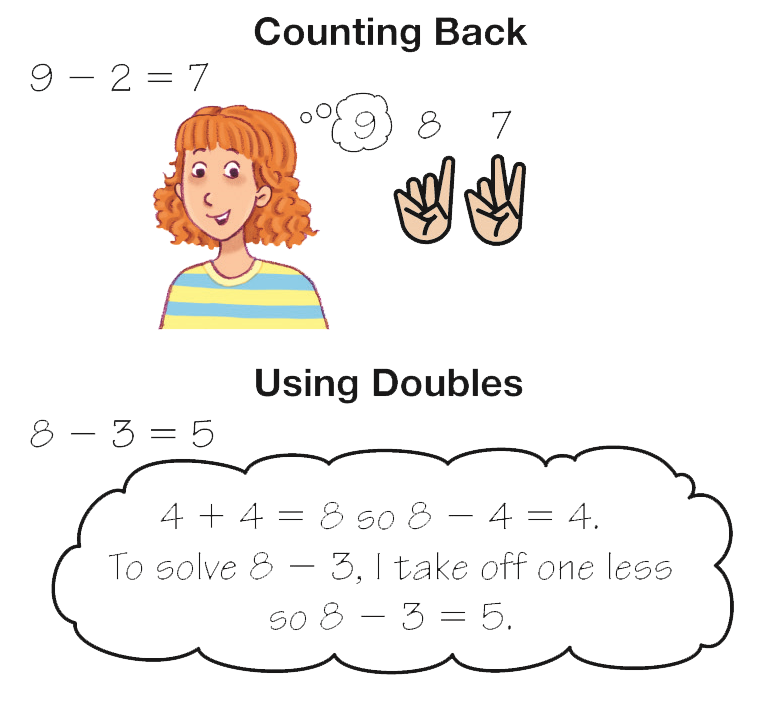Students practice strategies for subtracting from larger numbers as they play the game How Many in the Bag. They discuss invented strategies used in the game, including using fact families to help solve subtraction problems.
Content in this Lesson
- Representing subtraction using counters and number sentences [E2].
- Solving separate/take away word problems involving two whole numbers whose sum is between 10 and 20 [E3].
- Using mental math strategies and reasoning strategies (e.g., using doubles, using ten, making ten) to solve subtraction problems [E5, MPE2].
- Using strategies that apply the properties of addition (e.g., turn-around, compose and decompose numbers) to solve subtraction problems [E6, MPE2].
- Finding the unknown whole number in a subtraction sentence relating three whole numbers [E7].
- Explaining reasoning orally and in writing [MPE5].
Daily Practice and Problems Y–BB
Assessment in this Lesson
| Assessment | Expectation Assessed | Math Practices Expectation Assessed |
|---|---|---|
|
How Many in the Bag |
|
|
|
DPP Item Y |
|
|
|
DPP Item Z |
|
|
|
DPP Item AA |
|
|















